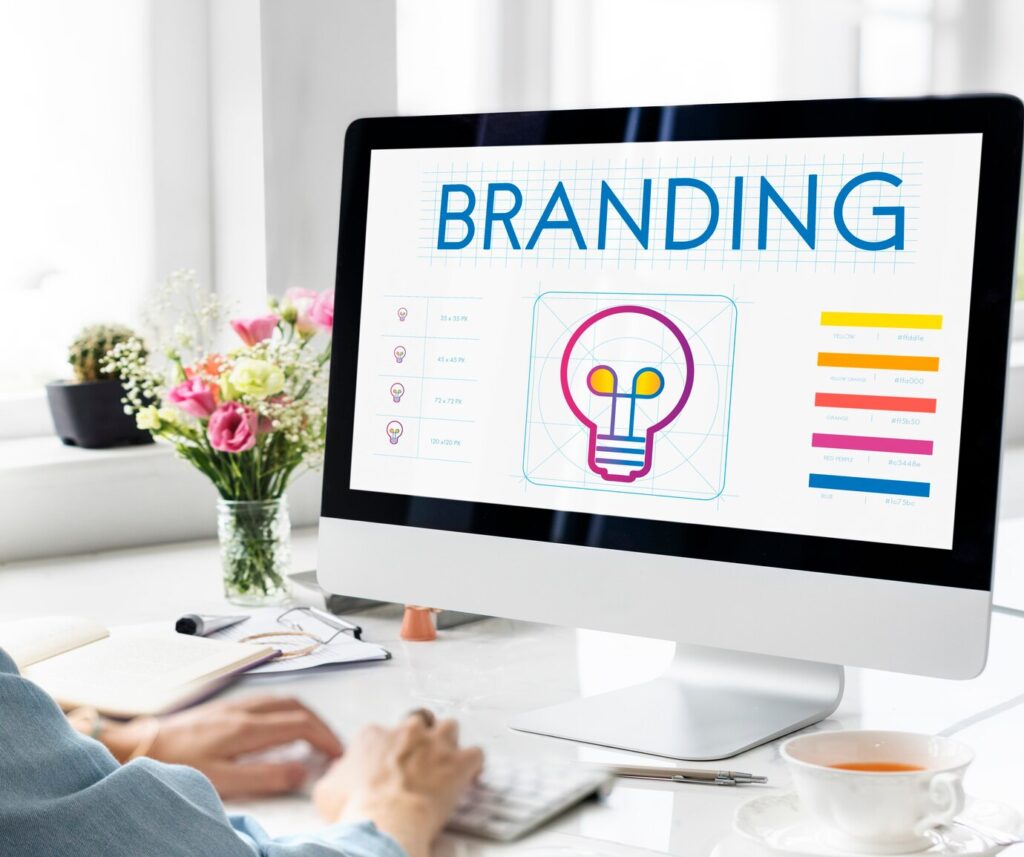1. Introduction
If you think branding is just about a flashy logo or a catchy tagline, think again. As we head deeper into 2025, branding has evolved into an all-encompassing experience—covering visual identity, user experience (UX), marketing, development, and even the ethical values that your business stands for. For small to medium-sized businesses (SMBs), branding can be the deciding factor in whether you thrive in today’s hyper-competitive marketplace or fade into obscurity.
Whether you’re a local coffee shop expanding into e-commerce or an up-and-coming tech startup with a ready-made website, a robust brand offers:
• Instant recognition among potential customers
• Deeper emotional resonance that drives loyalty and referrals
• Competitive differentiation, especially if you operate in a crowded niche
• Higher perceived value, enabling you to price your products and services at a premium
In this in-depth article, we’ll explore why branding matters for SMBs, how it ties into design, marketing, and development, and how to align it with the client awareness funnel to optimize conversions. Along the way, we’ll weave in top SEO keywords, ensuring your newfound brand efforts don’t just look good, but also rank prominently on Google, Bing, Yahoo, and Yandex.
If your goal is to stand out, drive more sales, and cultivate lasting customer relationships, read on. By the end, you’ll have a roadmap for building a brand that doesn’t just compete, but wins in today’s fast-paced digital landscape.
2. Why Branding Matters: Core Benefits for SMBs
Some small business owners still see branding as a “big company” concern, something only large enterprises should worry about. This misconception leaves a lot of opportunity on the table. Even the smallest enterprise can reap huge gains from a well-executed branding strategy.
2.1 Instant Recognition and Trust
The human brain processes images far faster than text. A consistent color palette, a memorable logo, and unified messaging help customers:
• Identify you quickly among competitors in search results or social media
• Associate positive experiences with your brand, fostering repeat purchases
• Recognize new offerings under the same brand umbrella
2.2 Price Premium and Customer Loyalty
Consider how a brand-name sneaker costs significantly more than a generic one. Branding plays a massive role in:
• Justifying higher prices: People pay more for perceived quality and status.
• Promoting loyalty: Strong brands encourage repeat business by forging emotional bonds.
• Encouraging advocacy: Loyal customers frequently act as brand ambassadors, recommending you to friends and colleagues.
2.3 Differentiation in a Saturated Market
In an era of “me-too” products, brand differentiation is vital. For instance, if you’re a web design agency offering similar services to many rivals, brand elements—tone, visual style, values—become the real tiebreakers for prospective clients.
2.4 Tangible vs. Intangible Brand Value
• Tangible Value: More traffic from brand-based searches, consistent social media engagement, stable revenue streams.
• Intangible Value: Positive brand sentiment, goodwill, word-of-mouth, and enhanced reputation.
Although intangible assets aren’t on your balance sheet, they fuel long-term growth and resilience.
3. Branding Essentials for SMBs: Strategies and Tactics
Branding isn’t an overnight endeavor. It demands a deliberate approach, from defining your identity to ensuring consistency across digital channels—website design, social media, email marketing, etc.
3.1 Crafting a Clear Brand Identity
Brand identity comprises the visible aspects of your brand—name, logo, color palette, design style—that set you apart.
• Vision Statement: Why do you exist beyond making money?
• Mission Statement: How will you achieve that purpose?
• Core Values: What principles guide daily decisions and customer interactions?
Pro Tip: Document these in a style guide. It keeps team members (and vendors) aligned on brand messages and visuals.
3.2 Designing Consistent Visual Assets
From your website to business cards, everything should reflect your brand’s look:
• Logo: A memorable logo that works from favicon to large banners.
• Color Palette: 2–3 main colors plus complementary accents.
• Typography: 2 fonts max (headings + body text) for a cleaner aesthetic.
• Imagery: Consistent style (photos, illustrations) that matches brand tone.
SEO Note: Utilize alt tags and descriptive filenames to help search engines understand your images, boosting overall page relevance.
3.3 Developing a Distinct Brand Voice
Brand voice extends your personality into all copy. Ask yourself:
• Formal or authoritative? Casual and playful? Warm and empathetic?
• Do you prefer concise sentences or more descriptive storytelling?
Align voice with your audience and market. A B2B SaaS brand might be professional, while a local crafts store can afford a laid-back, chatty style.
3.4 Aligning Website Design with Brand Persona
Your website is often the heart of your digital presence. Each page—from the homepage to product listings—should echo your brand persona:
• Homepage Hero: Immediately convey core brand themes via color, typography, hero images.
• Navigation & Microcopy: Use brand-aligned labels (“Explore Our Works” vs. “Services”).
• Imagery & Graphics: Stick to brand-consistent visual styles—clean lines, edgy illustrations, or playful icons, depending on your tone.
Pro Tip: If design expertise is scarce, consider ready-made website solutions from agencies like Nveil—customizable enough to preserve brand integrity, robust enough for SEO performance.
3.5 Leveraging Ready-Made Website Solutions
Why beneficial for SMBs?
• Speed to Launch: Start capturing leads or selling products rapidly.
• Cost-Effective: Lower upfront investment than a custom build.
• Ongoing Support: Many ready-made providers handle updates, tech issues.
• SEO Advantages: Well-coded templates that handle mobile responsiveness and meta tags for crucial keywords (e.g., “affordable website solutions,” “ready-made websites for small businesses”).
Ensure your chosen solution allows brand customization—colors, fonts, images—so you don’t lose distinctiveness.
4. The Role of Branding in Design, Marketing, and Development
Branding impacts every aspect of your business—visual design, marketing campaigns, and even technical development.
4.1 Design Integration: Beyond the Logo
Many SMBs assume adding a logo to a site is sufficient. Real brand design goes further:
• User Interface (UI): Buttons, forms, icons, color choices reflect brand character.
• Layout & Structure: A brand that values simplicity might adopt a minimalist approach; a bold brand uses striking visuals.
• Packaging: If you sell physical products, ensure packaging echoes digital aesthetics.
SEO Angle: Brand consistency can reduce bounce rates and increase dwell times—two factors that indirectly affect rankings.
4.2 Marketing Synergy: How Brand Influences Campaigns
A cohesive brand ties all marketing efforts together:
• Messaging Consistency: Headlines, copy tone, visuals remain coherent across channels.
• Promotions: Premium brands might avoid frequent discounts, focusing on exclusivity; value-oriented brands highlight sales or bundles.
• SEO Content: Blogs and web pages weave in brand-specific keywords from moderate to high competition, like “local SEO strategies” or “web design agency.”
4.3 Development and UX: Building Trust Through Functionality
Branding isn’t just aesthetic—your website’s underlying framework affects user perception:
• Fast Performance: A brand promising efficiency can’t afford slow load times.
• Security: A trust-focused brand needs SSL, reputable hosting, and robust security measures.
• Scalability: If innovation is central to your brand, ensure the backend can handle future growth without constant overhauls.
• UX: A user-centric brand must reflect it in navigation clarity, minimal checkout steps, and integrated chatbots or support portals.
5. Aligning Branding with the Client Awareness Funnel
Your branding should resonate at every stage of the client awareness funnel—from prospects who don’t realize they need your product/service to those who are ready to buy.
Unaware & Problem-Aware (TOFU)
• Definition: Prospects who don’t know they have a brand or website issue, or can’t articulate it.
• Brand Approach: Offer broad, informative content subtly showing the value of branding and design.
• Content Example: “Why Good Branding Matters: Insights for Small Businesses.”
• Design Tip: Emphasize clarity, approachable language, and inviting visuals.
Solution-Aware (MOFU)
• Definition: Prospects know solutions exist (e.g., branding agencies), but haven’t chosen one.
• Brand Approach: Demonstrate how your brand solves common SMB issues via case studies or webinars.
• Content Example: “How We Rescued a Local Startup’s Image with a Rebranding Campaign.”
• Design Tip: Use testimonials, moderate-competition keywords like “affordable website solutions,” etc.
Product-Aware & Most Aware (BOFU)
• Definition: Prospects know your brand and offerings. They need final validation to convert.
• Brand Approach: Provide transparent pricing, a clear brand promise, and case studies addressing last-minute objections.
• Content Example: “Our Process: Building Custom Brand Identities That Drive Sales.”
• Design Tip: Prominent contact forms, easy scheduling, or “Buy Now” buttons for immediate action.
6. High-Traffic vs. Moderate-Competition Branding Keywords
A branding strategy also affects your SEO approach. Mix high-competition and moderate-competition keywords for balanced visibility.
6.1 High-Competition Keywords
• Brand consulting
• Digital marketing company
• SEO services
• Web design agency
6.2 Moderate-Competition Keywords
• Branding for small businesses
• Affordable website solutions
• Local SEO strategies
• Conversion optimization tips
Long-tail phrases like “How brand identity boosts SMB success” or “Why branding is crucial for e-commerce in 2025” can also bring targeted traffic with lower competition.
7. Case Study: How a Strong Brand Turned an SMB into an Industry Leader
Scenario: “Eco-Luxe Living,” a sustainable home goods retailer, struggled to stand out in a saturated “green” market. Their website looked generic, with no clear visual identity or cohesive messaging.
7.1 The Branding Overhaul
• Brand Identity: Defined core values (sustainability, minimalism, premium craftsmanship). Created a new leaf-inspired logo plus a sophisticated color palette (forest greens, gold highlights).
• Voice & Messaging: Rewrote product copy highlighting craftsmanship stories and eco-friendly credentials.
• Website Redesign: Employed a Nveil ready-made e-commerce template; integrated high-quality imagery, subtle animations, and brand-focused microcopy.
• SEO Strategy: Targeted moderate-competition keywords (“sustainable home goods,” “ethical household products”) plus high-competition terms (“eco-friendly brands”).
7.2 Results
• Brand Searches increased—people specifically typed “Eco-Luxe Living linens.”
• 2X Conversion Rate improvement from 2% to 4.2% within three months, thanks to brand-consistent visuals and clearer CTAs.
• Enhanced Media Coverage, including a feature in a national eco-friendly lifestyle magazine.
• Repeat Purchases rose by 35% due to stronger brand attachment and perceived product quality.
Key Takeaway: A cohesive brand can quickly shift consumer perception, turning a generic online store into a recognized authority within its niche.
8. Tying Branding to Website Success: Practical Steps for SMB Owners
Here are concrete actions to ensure your brand drives online growth:
8.1 Conduct a Branding Audit
• Visuals: Is your logo modern, color scheme consistent, typography aligned?
• Voice: Do headlines, product pages, and email copy all sound like you?
• User Perception: Solicit customer feedback on brand impressions.
8.2 Consolidate Brand Elements
• Brand Guidelines: A short PDF or web-based style guide covering logo usage, color codes, and tone of voice.
• Asset Library: Keep logos, banners, icons, marketing templates centralized for easy access.
8.3 Align Website Design
• Homepage Focus: Deliver a strong hero area conveying brand essence.
• Consistent CTAs: Reflect your brand’s voice—formal, quirky, or premium.
• Image & Copy Cohesion: Ensure each page feels like a unified brand experience.
8.4 Integrate Marketing and Development
• Marketing: Run campaigns that echo your brand’s message—e.g., a “Green Month” if eco-friendly is your theme.
• Development: Prioritize site speed, security, and scalability to reflect brand promises of reliability and innovation.
8.5 Track Metrics and Refine
• Analytics: Watch bounce rates, conversion funnels, session duration.
• SEO Monitor: Check rankings for chosen high and moderate-competition keywords.
• A/B Test: Adjust color schemes, headlines, or CTA placements for incremental gains.
Pro Tip: Make changes gradually and document them, so you can link shifts in performance to specific branding enhancements.
9. Common Pitfalls and How to Avoid Them
Inconsistent Branding
Logos or colors vary across your site and social media, confusing customers.
Solution: Periodically audit visual and verbal assets for coherence.
Generic Messaging
Saying “We offer the best service” without specifics or authenticity.
Solution: Highlight unique processes, real success metrics, and brand stories.
Ignoring Localization
A global brand approach might alienate local audiences if you heavily depend on local clients.
Solution: Tailor messaging or visuals to regional preferences or cultures.
Over-Branding
Excess pop-ups, animations, or brand flair distract more than they help.
Solution: Maintain balance—brand authenticity should support, not overshadow, usability.
Skipping Social Proof
A brand that doesn’t showcase testimonials or endorsements can seem unproven.
Solution: Prompt satisfied clients to leave reviews or post user-generated content.
10. Conclusion
In a digital ecosystem brimming with choices, branding emerges as the unifying thread linking design, marketing, and development. For SMBs competing in 2025, branding goes beyond a nice logo—it’s the emotional and functional bedrock that wins you mindshare and market share.
A well-crafted brand informs everything: from how you communicate on social media to how your website’s homepage looks, and even how you handle customer data and security. By aligning your content with the client awareness funnel—catering to those who are Unaware, Problem-Aware, Solution-Aware, all the way to Product-Aware and Most Aware—you systematically guide prospects to become loyal customers.
Remember, branding is dynamic. As your SMB evolves, your brand might need periodic updates—new visuals, fresh messaging, or advanced technical features. Working with an experienced agency like Nveil—offering design, marketing, development, and ready-made solutions—can streamline this process, ensuring consistency and growth without major pitfalls.
Ultimately, a strong brand does more than differentiate you from the crowd—it creates lasting emotional connections that fuel referrals, repeat business, and a reputation that transcends price tags or short-term trends. By fully embracing brand principles, you can transform casual visitors into vocal champions, setting your SMB on a trajectory for sustained success in the ever-competitive digital arena.



